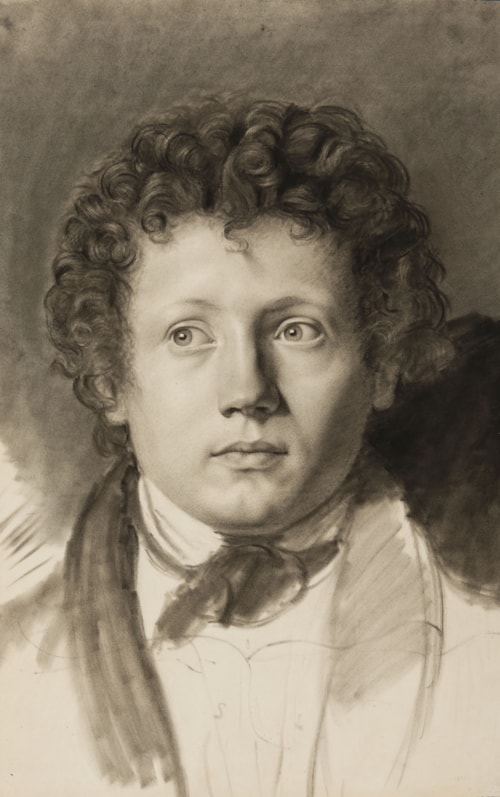
Attributed to Alexandre COLIN
Paris 1798 - Paris 1875
Biography
Alexandre Colin entered the Ecole des Beaux-Arts in Paris in 1814, at the age of sixteen, and joined the studio of Anne-Louis Girodet-Trioson, where he remained until 1817. (He also spent much time in the Louvre, making copies of Old Master paintings.) He chose not to take part in the Prix de Rome competition, and made his debut at the Salon in 1819, when he showed a portrait of a woman, and he continued to exhibit there regularly over the next fifty years. A good friend of Richard Parkes Bonington, Colin was also on close terms with Eugène Delacroix, with whom he shared a studio for a time, as well as Théodore Gericault, who was a few years older. In 1820, when Gericault’s painting of The Raft of the Medusa was shown in London, Colin accompanied the artist to England, and produced the lithograph of the painting that was sold at the exhibition. (Gericault, who died when Colin was twenty-five, was to be a lifelong touchstone for the artist. Not only did Colin own a large number of drawings by him, acquired at the auction of the contents of the master’s studio, and of which he made carefully traced copies, but he was also commissioned to produce facsimiles of other drawings by the elder artist.) Colin’s earliest works were genre subjects and portraits, and in 1824 he won a second-class medal at the Salon. That same year he travelled to Dunkirk with Bonington, and the following year visited England in the company of Bonington, Delacroix and Eugène Isabey. He also spent some time in Italy, and on his return to France settled in Saint-Omer.
Known as a painter of history, genre, literary and exotic subjects, Colin was also a fine portraitist and a lithographer. He exhibited regularly at the Salons in Paris until 1873, as well as at the Royal Academy and the British Institution in London. In 1830 he was appointed the director of the Ecole de Dessin in Nîmes, where he remained until 1838, although he continued to send paintings, drawings and watercolours to the Paris Salons. (In 1833, for example, he showed a dozen paintings, as well as several drawings.) By 1840 Colin was at the height of his success, winning a first-class medal at the Salon that year, and several of his large-scale paintings of historical, religious and allegorical subjects were reproduced as engravings or illustrated in contemporary magazines. He also painted religious works for churches in Paris and elsewhere between 1838 and 1865, notably at Saint-Nicolas-des-Champs and Saint-Roch in Paris. In 1847 he returned to Italy, travelling the length of the country down to Sicily, and painting several landscapes.
In 1867 Colin published Etudes d’après les grands maitres dessins et lithographies par A. Colin, a compendium of copies after works by the Old Masters, intended as a teaching aid for students. The copying of the paintings of earlier masters was a practice that occupied Colin throughout his career, and for which he was highly regarded. (Indeed, in 1860 he had been commissioned by the State to copy a painting by Velasquez in the Prado in Madrid.) In 1867 an auction was held of Colin’s copies after paintings by Raphael, Michelangelo, Leonardo, Velasquez, Murillo, Rubens, Rembrandt and others in the Prado, the Louvre and elsewhere. Colin’s four daughters and one son were also artists, as was his younger brother, the sculptor Paul-Hubert Colin.


